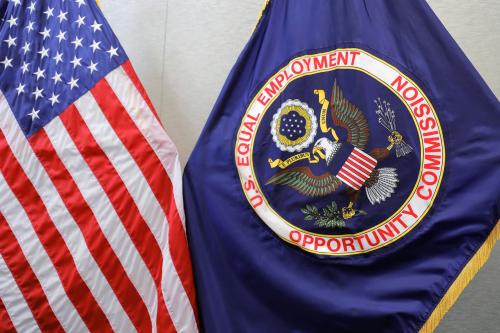The headline numbers in October’s employment report show continued recovery from the nation’s worst post-war slump. The pace of recovery remains faster than it was earlier in the year. Both the employer survey and household survey uncovered fresh evidence it is getting easier to land a job. Nonfarm payrolls increased 171,000 in October, with all the improvement coming from job gains in the private sector. The household survey showed an even bigger leap in employment. With seasonal adjustment, the number of adults who report holding a job increased 410,000 in October compared with September. The unemployment rate edged up 0.1% because the number of Americans in the labor force rose. The active workforce increased 578,000 in October; it has climbed almost 1 million in the past two months.
October’s good news on the employment front was reinforced by revisions in the payroll employment statistics for August and September. The updated payroll numbers added 84,000 to previously reported job gains in late summer and early fall. Since January of this year payroll employment has increased an average of 144,000 a month, with virtually all the improvement occurring in the private sector. During the same months, adult employment reported in the household survey increased by an average of 194,000 a month. The gains in both employer payrolls and adult employment are fast enough to push down the unemployment rate. Indeed, the jobless rate has fallen 0.4 percentage points since January and by a full percentage point over the past 12 months. All the drop in unemployment since January has been the result of increases in adult employment; none of it has been caused by a decline in labor force participation.
If the job market continues to improve we should expect to see an increase in labor force participation, especially among young adults. The adult labor force participation rate has dropped a bit more than 2 percentage points since the end of the last economic expansion. Part of the drop can be explained by the aging of the adult population. As the baby boom generation has begun to enter its retirement years, the fraction of the adult population in the workforce has shrunk. About half the drop in the participation rate since 2007 is due to an aging population. The remainder, however, is the result of a depressed job market. Workers who think they have bleak prospects of finding a job have dropped out of the workforce. As the job market mends, we should expect to see a gradual rise in the participation rate. We have seen labor force growth in the past couple of months, but there is still a long way to go.
Payroll gains in October were broadly distributed across goods-producing and service-producing industries. Employment edged up slightly in manufacturing, partly offsetting job losses in the past couple of months. Construction also saw job gains, though total employment in that industry remains more than 25% lower than it was before the onset of the recession. Service industries have fared much better than goods-producing industries in recent months. Temporary help firms also registered job gains in October, more than offsetting the job loss they experienced in September.
Government agencies bucked the general pattern of job gains in October and saw a small loss of employment. However, revised estimates of public-sector payrolls in August and September mean that the government has added about 83,000 employees since June. This represents a sharp reversal of the pattern during most of the recovery. Government payrolls shrank rather than expanded after the economy began growing again in late 2009. It now seems possible that the long trend toward government job losses may have ceased.
The Brookings Institution is committed to quality, independence, and impact.
We are supported by a diverse array of funders. In line with our values and policies, each Brookings publication represents the sole views of its author(s).



Commentary
Another Heartening Report on Job Market Progress
November 2, 2012